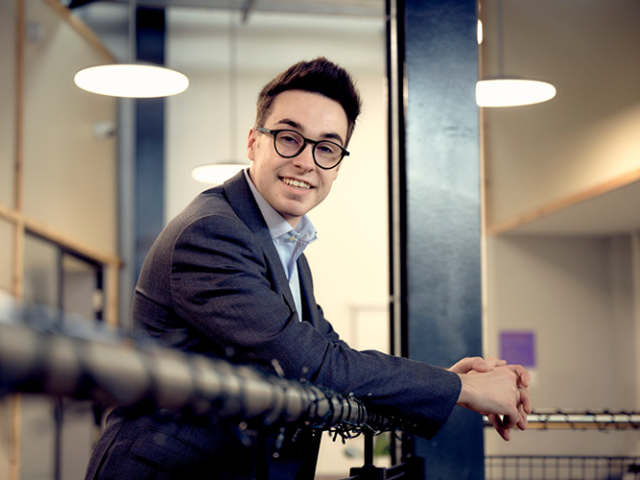The engineering workforce in the UK lacks diversity, with many groups underrepresented in engineering and other STEM careers. EngineeringUK as an ambition to address this problem by inspiring and informing more young people from these underrepresented groups through participation in high quality STEM and engineering engagement programmes.
In autumn 2020, EngineeringUK created a set of equality, diversity and inclusion (EDI) criteria to identify schools with larger proportions of students from groups underrepresented in engineering. EngineeringUK then targeted the promotion of its programmes to schools who met the EDI criteria.
The delivery of EDI bursary scheme
In addition to more targeted promotion, an EDI bursary scheme was established for schools that meet the EDI criteria. Bursaries were intended to help EDI schools overcome barriers to participation in EngineeringUK programmes, including the EEP Robotics Challenge, Big Bang at School and to engage with experiences on Noonwebsite that features quality assured engineering activities.
Despite the delay and disruption caused to schools by the COVID-19 pandemic, 151 schools received a bursary of £300 to £700 between autumn 2020 and summer 2021. Of these, 50 schools completed a STEM engagement programme during the 2020/21 academic year and more will follow in 2021/22.
Chris Atkinson is a teacher at Thornleigh Salesian College in Bolton. He received a £700 bursary to inspire students about the world of robotics. Students took part in the EEP Robotics Challenge and, using the bursary, the school purchased some Lego SPIKE prime kits to start a robotics club for year eight and 10 students.
Chris said: “The bursary has been so helpful in leading us on a path to do more with robotics and grow our expertise. It’s given us the opportunity to open the door to experiences we hadn’t thought about before and given us that foot in the door to start developing the curriculum. It’s definitely worth applying for a bursary, it can create opportunity with exciting topics that you might not be able to do because of a lack of funding.”
All schools receiving the bursary met the EngineeringUK EDI criteria. Over half (52%) of the schools have significantly above national average proportions of young people eligible for free school meals.
The use of the bursary
As the barriers to participation vary from school to school, EngineeringUK allows a high level of flexibility around how bursaries are spent. The most common use for the EDI bursary was for specialist equipment to support the activity, with the next most common being materials and resources (including general resources, such as printing).
Many schools also spent bursary money on high quality engineering and engineering related digital content. A high proportion of schools who received a bursary for Neon provision intended to spend it on paying for the activity itself.
The bursaries made a noticeable impact
Feedback was collected through a teacher survey and focus groups after schools had completed the programme for which they received a bursary.
There is some evidence from the teacher survey that the bursary made it more likely that the school would take part in the programme. 18% of schools participating in the Robotics Challenge and 27% of Big Bang at School schools strongly agreed on this. There is also evidence that the bursary motivated the school to take part, with 37% of Robotics schools and 27% of Big Bang at School schools agreeing.
Comments in the focus groups indicated that some teachers felt that participation in the programme was made possible by the bursary. It was made clear that bursaries allowed schools to improve the richness of the experience for students and make it more engaging. 59% of Robotics Challenge and 45% of Big Bang at School teachers strongly agreed that the bursary ‘meant that my students had a better experience of [the programme] than they otherwise would have’.
Teacher feedback also indicated the bursary made it possible for them to involve more young people from underrepresented groups. 41% of Robotics Challenge and 55% of Big Bang at School schools strongly agreed the bursary ‘allowed my school to involve more students from underrepresented backgrounds’.
Emma Diserens, Head of Equality, Diversity and Inclusion, said: “It is vital that we ensure engineering careers are for everyone, and it’s essential we do this by improving the equality, diversity and inclusion of outreach activities for young people.
“EngineeringUK bursaries allows schools who work with young people from groups underrepresented in the engineering profession to experience the excitement and fulfilment a career in engineering could offer. Widening the opportunities available to young people and changing their perceptions of the profession needs to be a focus for the sector so it’s positive to see EngineeringUK bursaries are creating a noticeable impact.”
Teachers verdict on bursaries
Teachers who have previously received a Neon bursary have given feedback on how they used it and the difference it has made for their students.
Tom Gilfeather is head of personal development at Ashmole Academy in North London. He received a £700 bursary to coordinate a drone coding and engineering day with Skills Supply. Tom said: “I would absolutely recommend the bursary – I would say absolutely go ahead and apply. I think students really need more of this kind of days and experiences.”
Amanda Moffat is a Design and Technology teacher at Alderman Peel High School in Norfolk. She received a £700 bursary to plan 2 STEM team-building days for her year 7 and year 8 students.
Students took part in the Logistics Factory experience and the Pipe Bridge Challenge. Amanda said: “In our school we don’t have a STEM budget, activities come out of my department budget so any financial help is hugely appreciated. Neon bursaries are easy and quick to apply to, and really make a huge difference to the students.”




